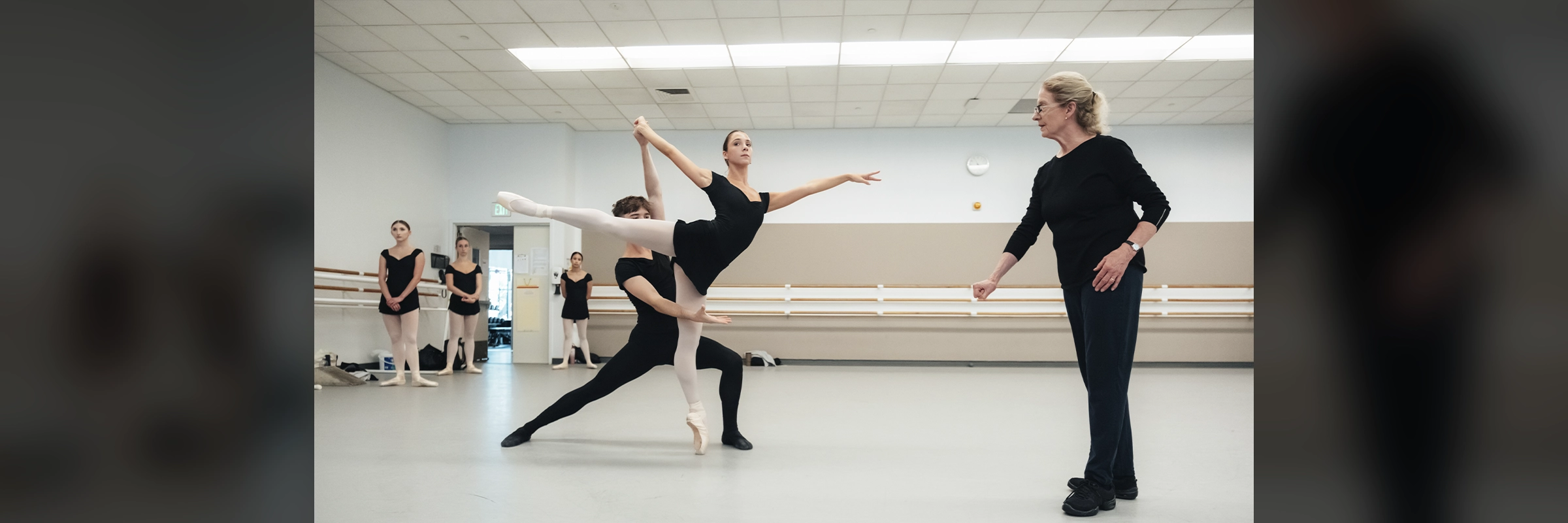Reviving a Beloved Christensen Ballet
Betsy Erickson On Staging it for SF Ballet School
This season the SF Ballet School Trainees are reviving Lew Christensen’s Vivaldi Concerto Grosso, his 55th and final creation for San Francisco Ballet. Created in 1981, Christensen returned to the classical ideal of absolute dance, movement free from the associations of plot and manner. Vivaldi Concerto Grosso is sheer dance–Christensen's most eloquent and lucid choreographic creation.
San Francisco Ballet: Tell us about your history with this ballet.
Betsy Erickson: Lew created it on Jim Sohm and me, and I went on to dance it with Val Caniparoli. Lew always wanted to try something different. He had ideas about how a woman could be partnered and wanted to challenge the standard format. So, he expanded the traditional ways of partnering in several ballets, including one where he is partnering the woman by her neck, and another with her hair. In this 2nd movement pas de deux we are working on the partnering of the woman by the hand and as close to her foot as possible. This depends on how long the man’s arms are and how he can coordinate with the woman.
This score by Vivaldi was really compelling to him. In addition to being a dancer and choreographer, Lew was a musician and played the cello. He had wanted to use this music for a long time and this concept of partnering he wanted to develop. It all came together in this piece.

SFB: What was it like working with Lew and what memories do you have of him creating it?
BE: He had a great sense of humor, all three Christensen brothers did. It was always under the surface. He took choreography seriously but always with his gentle humor. There was always a twinkle in his eye, especially if he was creating.
For this ballet, he wasn’t very energetic due to his illness and age, so he just threw ideas out there, saying, “Try this, what if you do that.” He would describe it, and we would do it physically. It was a bit of a give-and-take. Partly the dancers creating it, and partly Lew directing it and saying a few words to give us an idea of where to go with it. He was pretty easygoing, especially when we were rehearsing a new work in the studio.
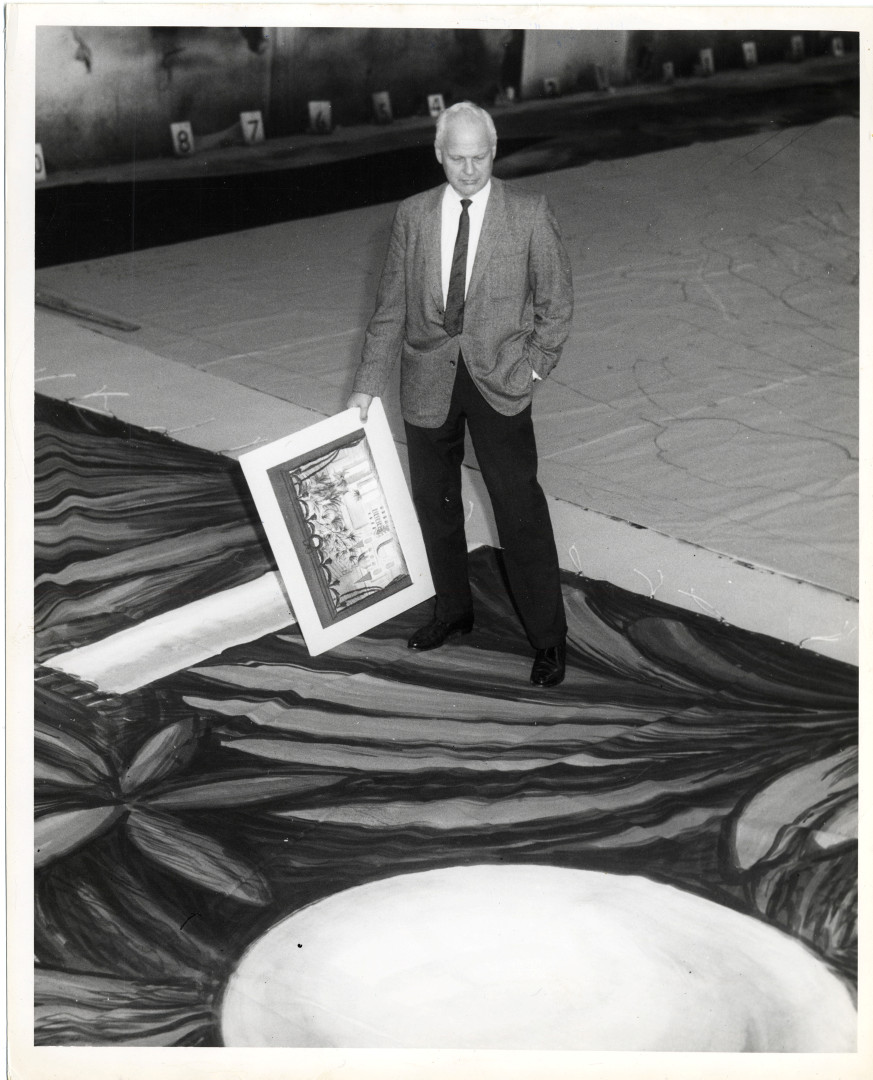
SFB: How does it feel to pass this piece along to the next generation of dancers?
BE: It's wonderful to see it come alive again because it hasn’t been performed for probably 30 years. Just in teaching it, to be able to pass down to another generation the information, the style, the idea. To see it come alive is rewarding; I enjoy doing that.
Lew had a lot of ballets that are just gems, they are magnificent. The only way they can come alive is when they are performed. School Director, Grace Holmes, had the idea to bring it back and celebrate this part of the history of the company and his works.
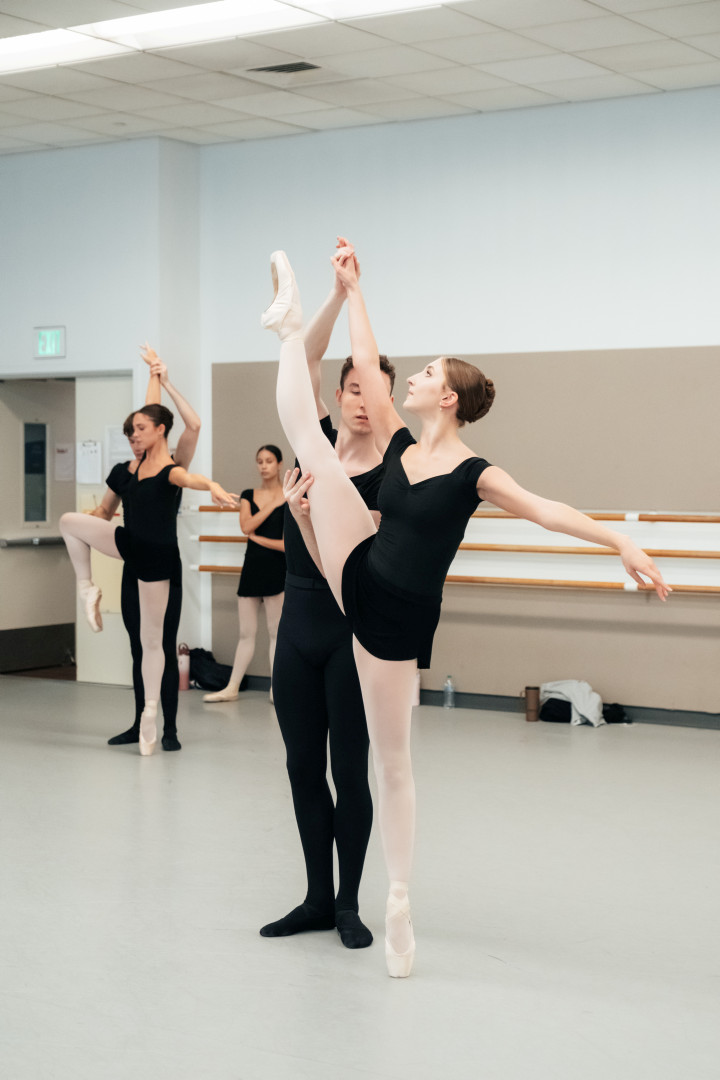

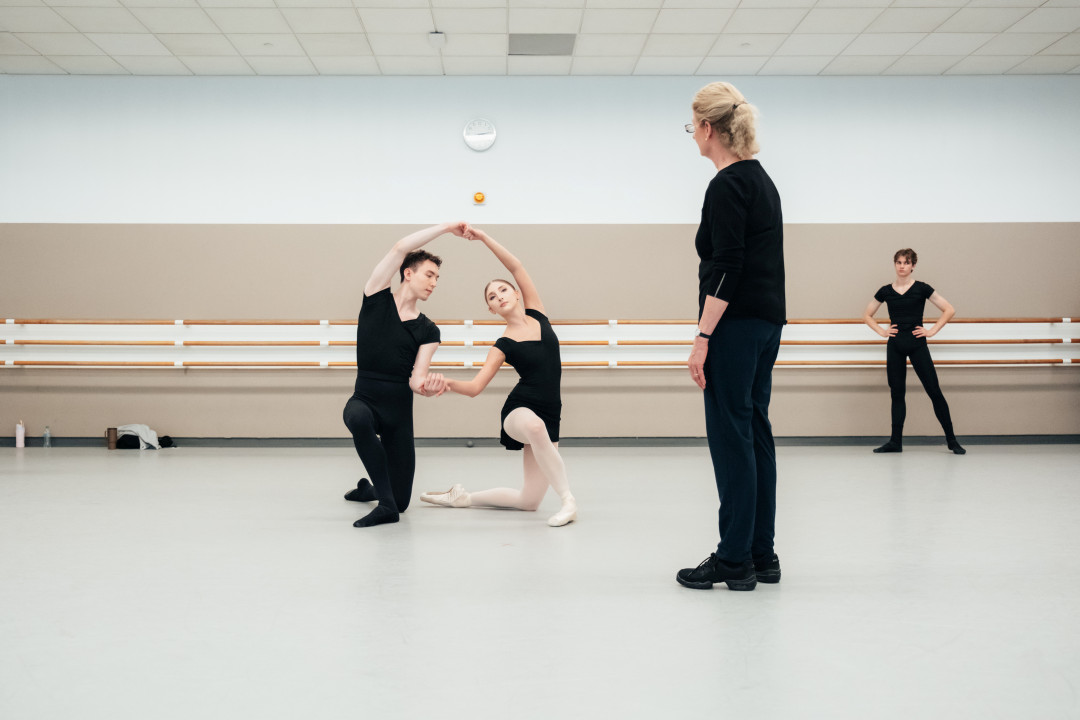

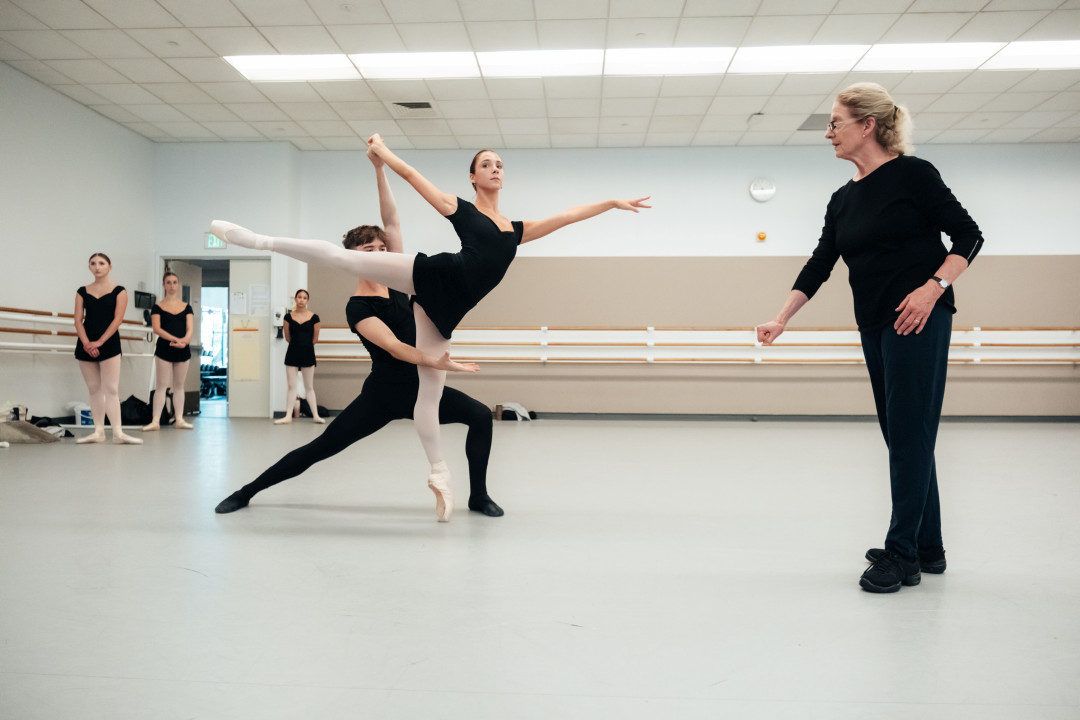

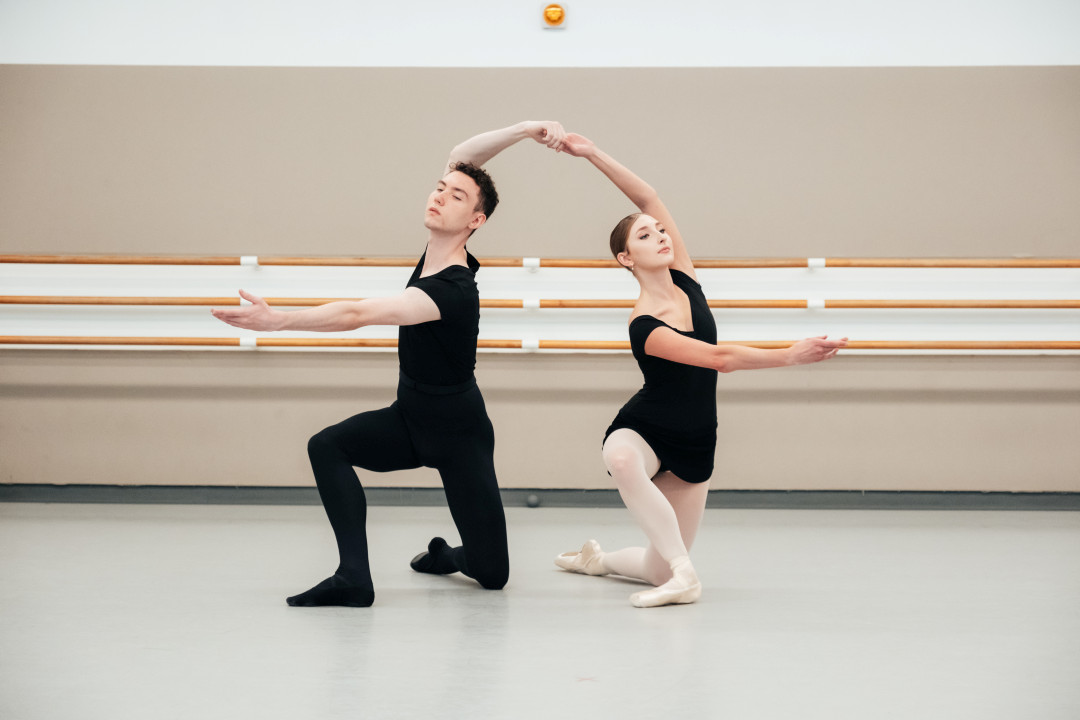

SFB: Beyond the technical aspect of the choreography, what specifically are you looking for them to capture in the work?
BE: It’s the quality of the movement that needs the most work. They are getting the musicality and coming to understand the movement, but then it’s how you do it. It’s the quality that takes time to learn and accomplish, so that’s what they’re working hard on right now. It was made for a more mature artist so it’s challenging in that sense. The quality takes some time, but they are working really hard.
The Trainees will bring this piece to Ballet Sun Valley this fall and it will appear again onstage this Spring, so they have time to keep on working on these aspects.
SFB: What can audiences look for when they watch it?
BE: The musicality and beauty of the movement. The whole piece is classical and technically demanding, and the other two movements are fast and articulate. It’s certainly a challenge all the way around.
SFB: Do you have any memories of working with Grace Holmes when she was a young dancer here at the company?
BE: I was just at the end of my dancing career when Grace arrived, so we overlapped a bit. I came back in 1992 to work as a ballet master at SF Ballet and came to know her as a dancer then. She was a fabulous dancer. She was the only person I knew who could dance out on an angle without falling over. She would challenge gravity. She was magnificent and with a lot of personality.
See the Trainees onstage in this beloved work in the Spring Festival on May 9 and 10.



